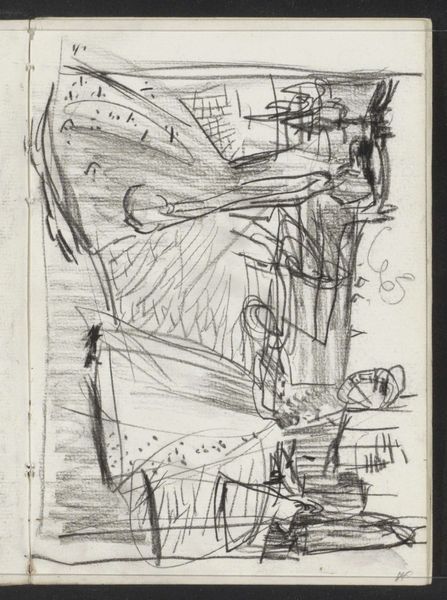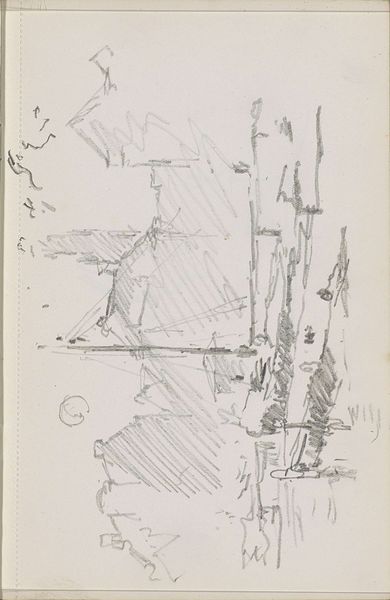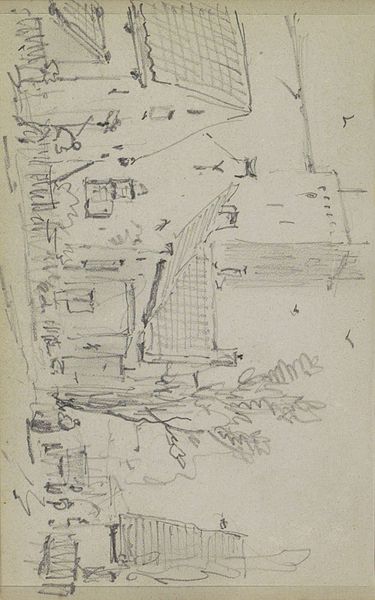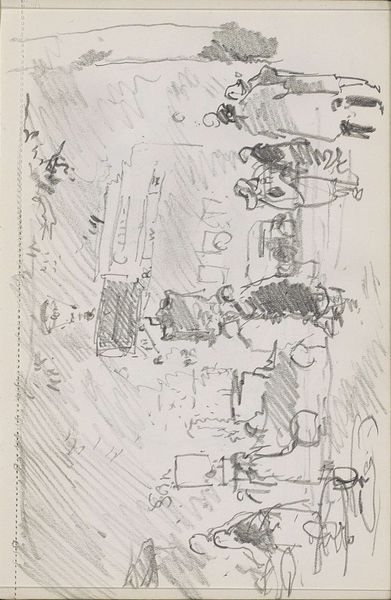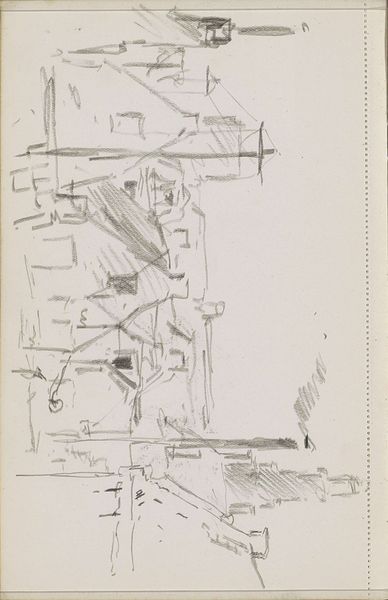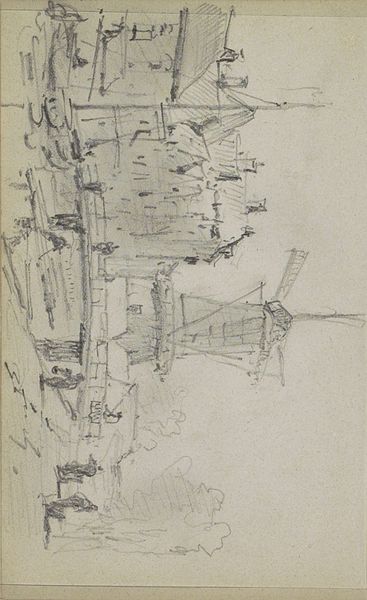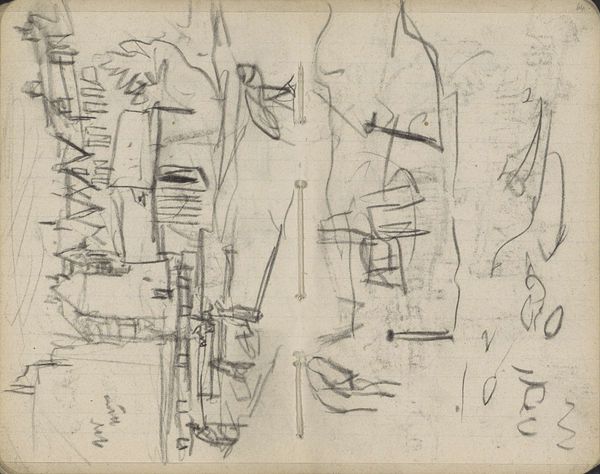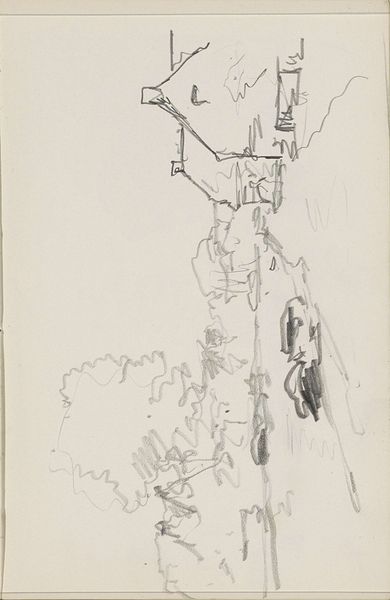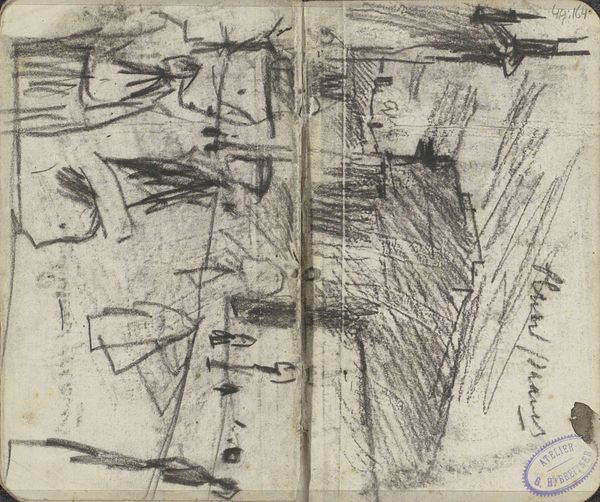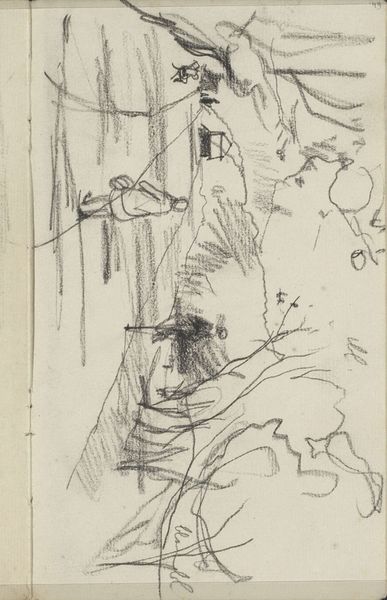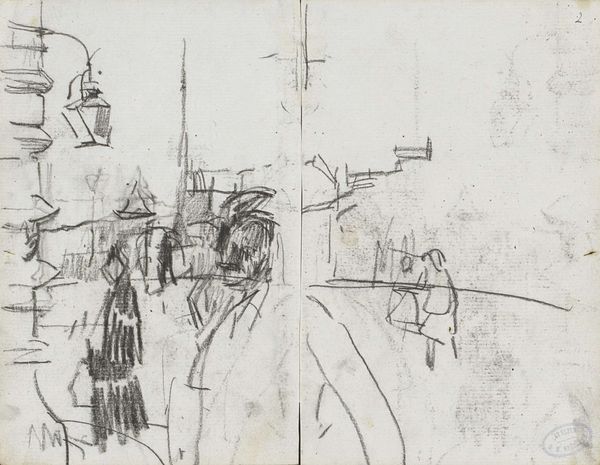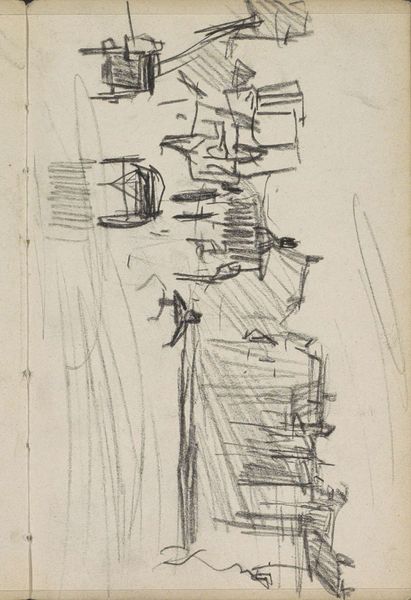
drawing, pencil, architecture
#
drawing
#
landscape
#
pencil
#
cityscape
#
architecture
#
realism
Copyright: Rijks Museum: Open Domain
Curator: What a wonderfully raw and immediate drawing! It's like catching a fleeting thought, isn't it? Editor: Yes, there’s a kind of quiet industry, with visible human infrastructure implied here, or an attempt to depict that, through marks on paper. The labor behind architecture and industry feels apparent even in a preliminary state. Curator: We're looking at a pencil drawing from the Rijksmuseum collection, "Aanlegplaats voor schepen in een stad," or "Docking Place for Ships in a City," created by Cornelis Vreedenburgh sometime between 1890 and 1946. The interesting part about the work is this almost transparent architectural framework of buildings that seem to suggest symbolic meanings. Editor: That time frame is quite wide! I’m most drawn to those lines—how direct, like scaffolding around half-built structures, or almost directions towards labor to be started in this docking space for ships. Is the medium a way to create affordability? I notice the use of hatching in the rendering of the shaded area, there may have been limited time here, but the lines, they capture work that may soon commence, a work still in process. Curator: Perhaps…but the bareness has a power that recalls specific, recognizable structures. Those architectural angles remind me of the human impulse toward monumental building. Even these simple lines can reflect civic power or collective spirit through symbolism. Editor: Maybe. It strikes me that with just a pencil and paper, this artist quickly creates something of a functional piece. Even unfinished, as you pointed out, that's important, though: where are these docking bays being installed? Is this a piece promoting civic work and investment for others to see, is there a propagandistic edge here, and do we think this is drawing is connected to a larger series of materials created for that same purpose, to spur action and investment in the place that's being shown? I’d wonder who the potential consumer of the work was? Curator: It makes me wonder about what drove people in the city. There's no movement depicted but it's a fascinating composition that invites speculation on shared identity of that place. Editor: It is amazing what kind of history a piece of art is holding from that period; both in its lines and in the labor behind that architecture which the city dweller identifies with the construction. Curator: True, let's think more about that intersection of collective cultural symbols and personal action.
Comments
No comments
Be the first to comment and join the conversation on the ultimate creative platform.
